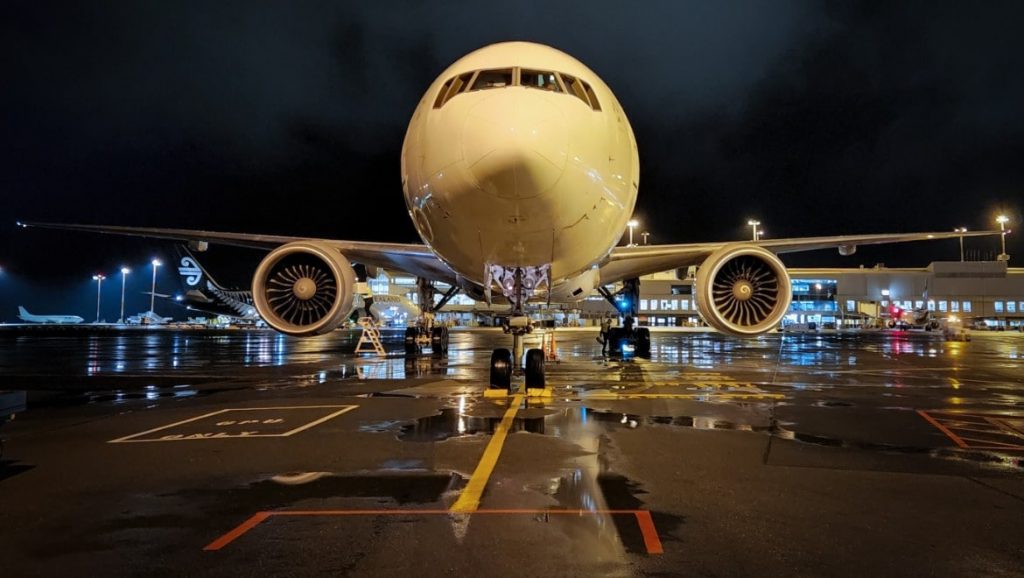Air New Zealand’s first 777 has finally left the Victorville desert boneyard in California and returned to Auckland.
The long-range Boeing, ZK-OKP, departed the Mojave desert at 1:38pm on 20 August as flight NZ6001 and landed in LA before continuing on to the North Island, where it touched down at 5:03am on Tuesday.
In 2020, Air New Zealand sent four of its seven flagship Boeing 777s to the US storage facility at the start of the COVID-19 pandemic.
Desert locations are preferred by airlines for storage — either temporary or permanent — because the searing heat prevents rust, and precipitation is rare.
ZK-OKP is the first to return home, with the remaining three to be revived over the coming months. It was moved to Victorville on 13 August 2020.
The airline also has three 777-300 aircraft that have been stored locally in Auckland for the last two years.
Two of these are back in service (ZK-OKN and ZK-OKQ), with ZK-OKO due to re-enter service in the coming weeks.
Air New Zealand chief operating officer Alex Marren said earlier this month, “No one could ever predict what would happen in the pandemic and now that demand has bounced back quicker than anticipated, we knew it was time to bring these aircraft back from Victorville.
“When the hard decision was made to park our 777 fleet, we knew the desert was an ideal environment due to its warm and dry conditions. After being stored for almost two years in this climate, they are coming out of long-term parking in good condition.
“It takes around six to eight weeks to get a desert-based 777-300 ready to fly and the team are working with a local maintenance provider to reanimate our aircraft out in the desert.”

According to Marren, the aircraft is first washed scrupulously before engineers step in to remove the protective covers that were placed over the wheels, windows, sensors, and wings of the aircraft.
The plane then undergoes a “thorough servicing and maintenance programme” before it can return to passenger service.
“From servicing the wheels on the landing gear to checking upholstery and the inflight entertainment system within the cabin, a lot of work goes into these aircraft to make sure they are ready to welcome customers back on board,” he said, noting that the jets have also been maintained throughout their stint in California.
“The 777-300 is our biggest wide-body aircraft capable of carrying up to 342 customers with up to 154 cubic metres of cargo capacity available. It will be great to have more of these 777-300s flying to connect New Zealand to the world,” he added.
“These aircraft going into service means we’re rehiring more cabin crew, pilots, and engineers to resource our schedule and it’s been fantastic to see people coming back into the business. We know our pilots and cabin crew can’t wait to get back on board to carry customers from Auckland to Los Angeles, San Francisco, Sydney, Melbourne, and more.
“It’s a welcome change from the type of flying our operating aircrew did through the height of the pandemic and for those stepping back onto a 777-300 for the first time in more than two years, it will be an emotional reunion with one of their favourite aircraft.”
The airline also sent some of its 777-200s to Roswell in New Mexico.
Premium content subscribers can also read Australian Aviation’s feature on boneyards here.
















